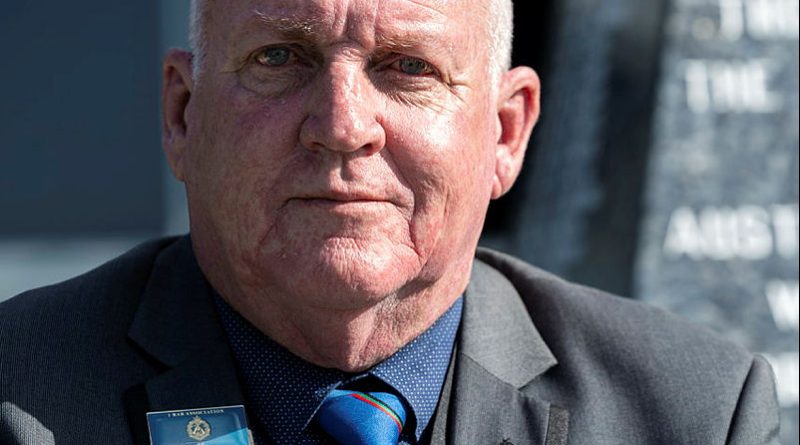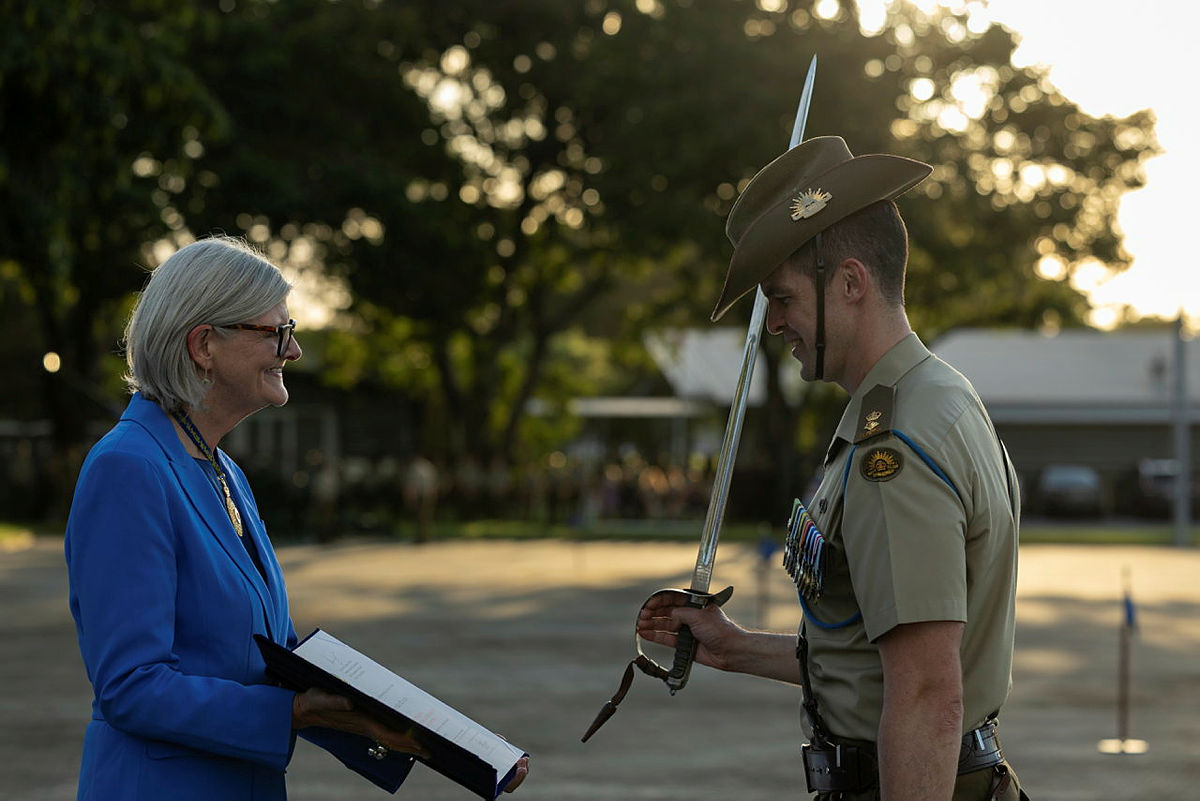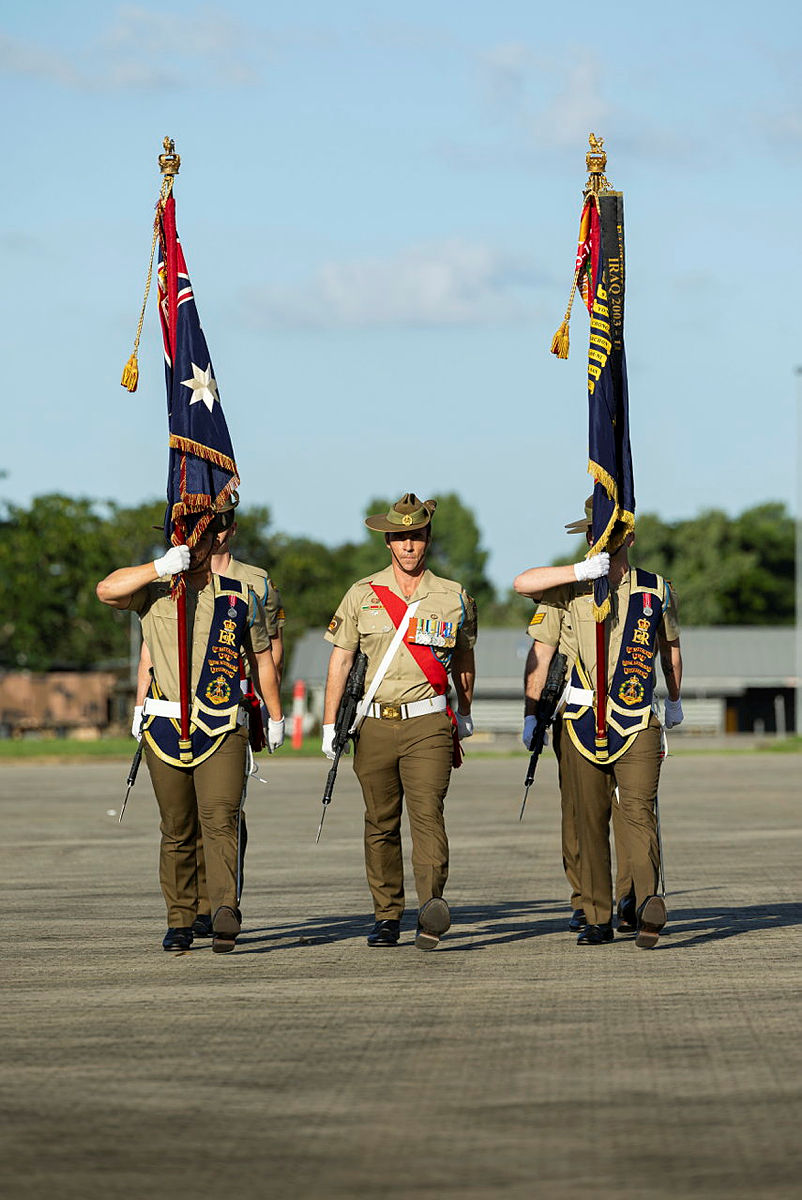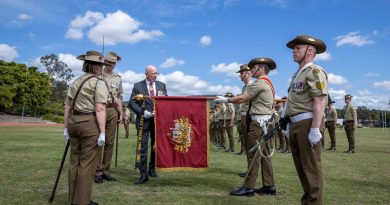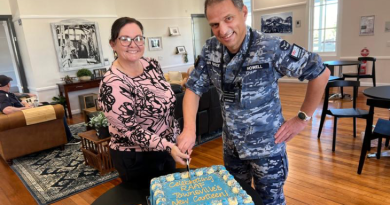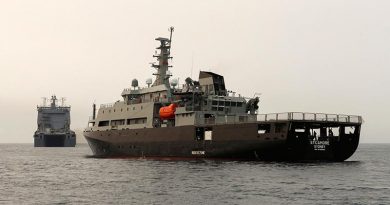Regiment recognised for Somalia operation

Stepping on to the streets of Baidoa, Somalia, was like stepping into a different world for newly promoted Corporal Terry Conner.
CAPTION: Veteran Terry Conner, of 1st Battalion, the Royal Australian Regiment, at the Meritorious Unit Citation parade for the units’ service in Somalia, held at Lavarack Barracks, Townsville. Story by Corporal Michael Rogers. Photos by Corporal Guy Sadler.
It was 3am, and his section was leading the first patrol of Operation Solace in 1993.
“Everything was different. The smells, the people. Things like the meat market and stalls, they didn’t have a great deal of stuff,” he said.
“It wasn’t until you went out into the villages that you really saw they were definitely suffering.”
Over the next 17 weeks, soldiers from 1st Battalion, the Royal Australian Regiment (1RAR), would contend with extreme heat, gunfire exchanges with militia and the humanitarian toll of civil war.
Mr Conner was out field when he got the call to come back and prepare for a deployment to Somalia.
Because of the short notice, preparation was condensed into a day and a half of briefings, a few days readying equipment, and Christmas dinner with the family before boarding HMAS Jervis Bayon Christmas Eve.
“I didn’t have an idea where Somalia was, and no idea what was occurring there at all,” he said.
During the 28-day transit, the infantrymen trained as much as they could and received daily briefings on the situation and their mission, before arriving on January 17.
The 1RAR battalion group deployed under the US-led United Task Force to help stabilise Somalia, which had fallen into civil war after the Somali Democratic Republic’s collapse in 1991.
Besides the shock of human suffering, the soldiers also adapted from having trained mainly in jungle back home, to urban and town patrolling in Somalia.
“But our training had been excellent and the fundamentals of soldiering and patrolling were still used, we just had to tweak it a bit,” Mr Conner said.
Baidoa had been named “the city of death”, and was the epicentre of famine that swept through the country in 1992.
The Australian forces provided security for food distribution, confiscated weapons from Somali militia and hand-drew maps of the operating area to identify key locations and non-government organisation buildings.
The work was relentless, with companies on three-day rotations of three-hour patrols broken up by six hours of rest, which was usually taken up by briefs, orders and building up the camp.
But it was the loss of life and injured Somalis desperate for help that stuck with Mr Conner.
“We treated people at checkpoints who had been shot in the chest. Children who’ve been wounded playing with explosives. There was one girl who had her hand blown off,” he said.
While the locals were initially scared of the Aussies, through the efforts of those deployed, a friendly rapport developed.
The operation was seen as successful, with food security established and rebuilding efforts in Baidoa able to get underway.
The 1RAR battalion group withdrew on May 21, 1993, from what had been the ADF’s largest land operation since the Vietnam War.
About 1100 patrols were undertaken and more than 1000 weapons seized from Somali fighters.
One soldier, Lance-Corporal Shannon McAliney, was killed by accidental fire while on patrol.
More than 900 troops took part in Operation Solace, including soldiers from 3rd/4th Cavalry Regiment, 4th Field Regiment, 3rd Combat Engineer Regiment and 103rd Signals Squadron.
CAPTION: Governor-General Sam Mostyn presents the Meritorious Unit Citation to Commanding Officer 1st Battalion, the Royal Australian Regiment, Lieutenant Colonel Benedict Farrell during a parade in Somalia.
In recognition of the operation, 1RAR was awarded the Meritorious Unit Citation for outstanding professionalism and exemplary conduct.
Governor-General Sam Moyston presented the honour during a parade at Lavarack Barracks on April 7.
Commanding Officer 1RAR Lieutenant Colonel Benedict Farrell said the award was an opportunity to remember the veterans’ sacrifices in Somalia.
“This is of major significance to 1RAR. We are the stewards of the battalion and we maintain the customs and traditions set by those before us,” he said.
“It’s not just about remembering their deployment, but also for a lot of the soldiers, their friends they’ve lost over the last 30 years.”
Veterans were invited to present current 1RAR soldiers with the citation during the parade.
Mr Conner said the operation was the highlight of a 28-year career, which included deployments to Timor and Afghanistan.
“The entire group, just not us infantry boys, had to go in there and adapt and change a lot of things we were used to doing, but at the same time maintain the fundamentals of how we did our jobs,” he said.
“I think everyone’s quite proud of what we did and very grateful that there has been recognition.”
CAPTION: Soldiers from 1st Battalion, the Royal Australian Regiment’s, colour party march on parade at Lavarack Barracks, Townsville.
.
.

.
.

